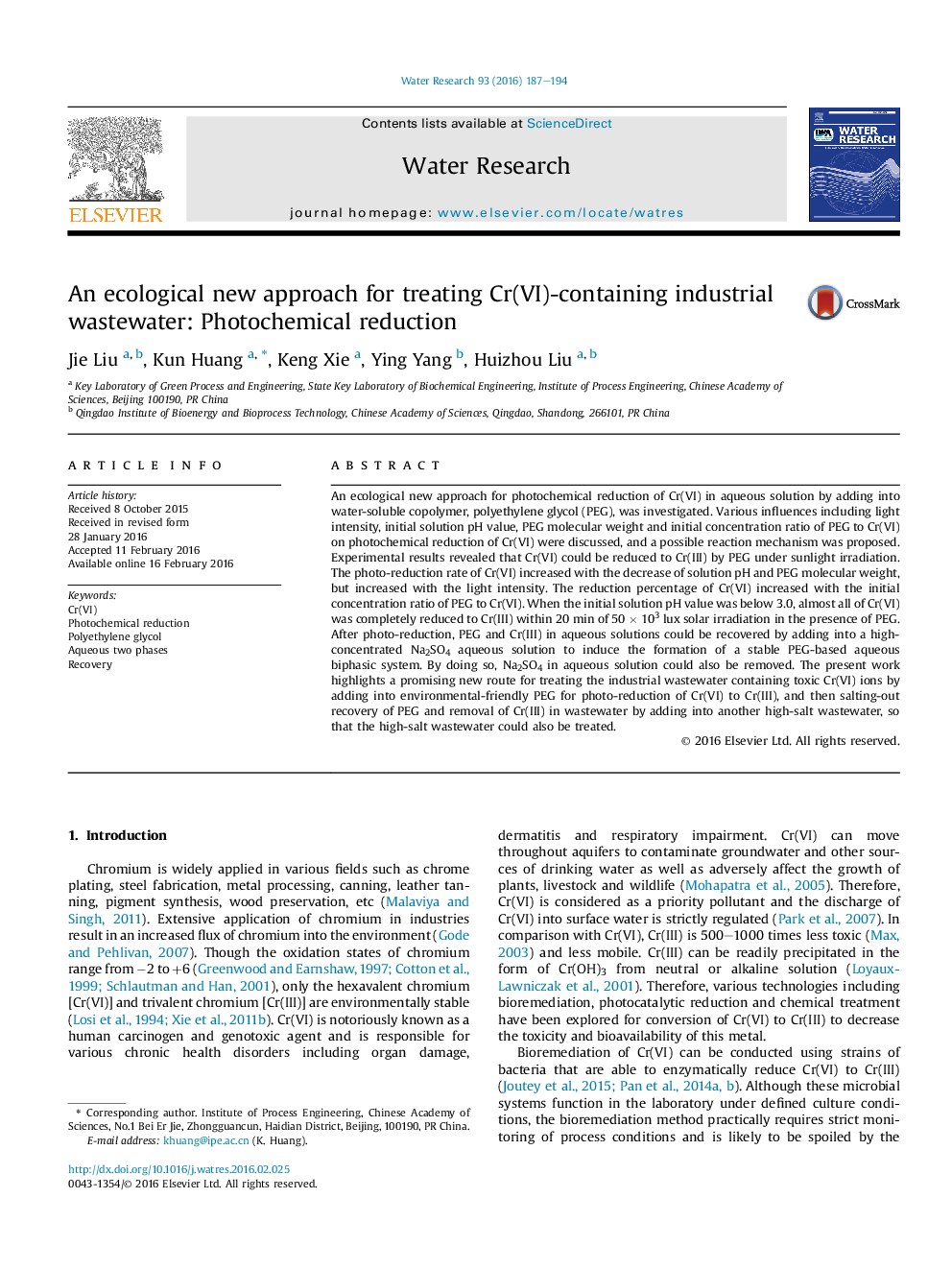| Article ID | Journal | Published Year | Pages | File Type |
|---|---|---|---|---|
| 4480949 | Water Research | 2016 | 8 Pages |
•A new approach for photochemical reduction of Cr(VI) by polyethylene glycol.•Reduction includes formation of Cr(VI)-PEG ester, photo-excitation and dissociation.•Reduction rate of Cr(VI) increases with light intensity and decrease of solution pH.•PEG and Cr(III) were recovered by adding high-concentrated Na2SO4 aqueous solution.•An ecological approach by using one kind of wastewater to treat another wastewater.
An ecological new approach for photochemical reduction of Cr(VI) in aqueous solution by adding into water-soluble copolymer, polyethylene glycol (PEG), was investigated. Various influences including light intensity, initial solution pH value, PEG molecular weight and initial concentration ratio of PEG to Cr(VI) on photochemical reduction of Cr(VI) were discussed, and a possible reaction mechanism was proposed. Experimental results revealed that Cr(VI) could be reduced to Cr(III) by PEG under sunlight irradiation. The photo-reduction rate of Cr(VI) increased with the decrease of solution pH and PEG molecular weight, but increased with the light intensity. The reduction percentage of Cr(VI) increased with the initial concentration ratio of PEG to Cr(VI). When the initial solution pH value was below 3.0, almost all of Cr(VI) was completely reduced to Cr(III) within 20 min of 50 × 103 lux solar irradiation in the presence of PEG. After photo-reduction, PEG and Cr(III) in aqueous solutions could be recovered by adding into a high-concentrated Na2SO4 aqueous solution to induce the formation of a stable PEG-based aqueous biphasic system. By doing so, Na2SO4 in aqueous solution could also be removed. The present work highlights a promising new route for treating the industrial wastewater containing toxic Cr(VI) ions by adding into environmental-friendly PEG for photo-reduction of Cr(VI) to Cr(III), and then salting-out recovery of PEG and removal of Cr(III) in wastewater by adding into another high-salt wastewater, so that the high-salt wastewater could also be treated.
Graphical abstractFigure optionsDownload full-size imageDownload high-quality image (149 K)Download as PowerPoint slide
